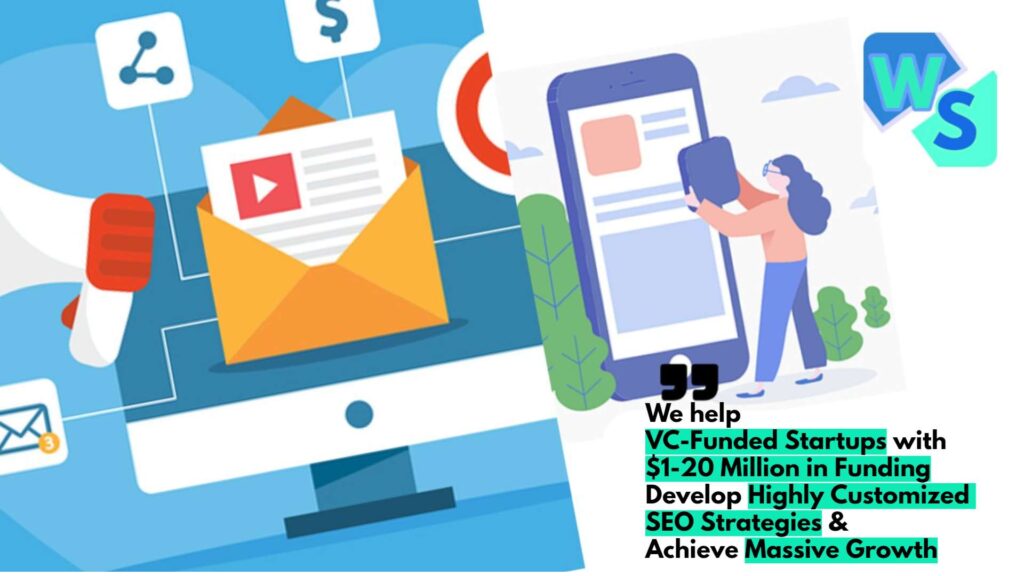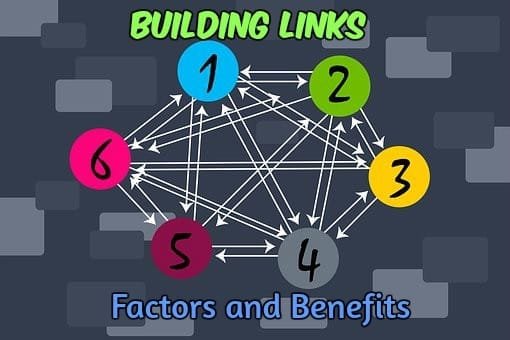Understanding Brand Loyalty
Importance of Brand Loyalty
Brand loyalty is vital for any business aiming to cultivate a sustainable revenue stream. Loyal customers tend to make repeat purchases, providing you with predictable income. Additionally, retaining existing customers is significantly more cost-effective than acquiring new ones. This dynamic leads to sustained revenue growth and reduced costs for your business, enabling you to allocate resources more efficiently. According to Market Tactics, effective customer loyalty can significantly impact your bottom line.
Understanding the significance of brand loyalty is imperative for your business strategy. Here are key aspects highlighting its importance:
| Benefit | Description |
|---|---|
| Predictable Income | Loyal customers contribute to consistent sales numbers. |
| Reduced Acquisition Costs | It costs less to keep a current customer than to attract a new one. |
| Long-term Relationships | Strong loyalty fosters relationships that can adapt over time. |
| Advocacy and Promotion | Satisfied customers are likely to recommend your brand to others. |
| Competitive Edge | A loyal customer base can set you apart in a crowded market. |
Investing in brand loyalty programs is an effective strategy to increase retention and engagement.
Building Emotional Connections
Creating emotional connections with your customers is essential for enhancing brand loyalty. When customers feel a personal relationship with your brand, they are more likely to choose you over competitors, even when faced with enticing offers. A strong brand promise that resonates with your target audience can cultivate trust and encourage clients to advocate for your brand. This connection can significantly expand your brand’s reach over time.
To foster emotional connections, consider the following strategies:
| Strategy | Description |
|---|---|
| Authentic Engagement | Use social media to connect genuinely with customers, aligning messaging with brand values. |
| Customer Acknowledgment | Recognize and reward loyal customers, making them feel valued and appreciated. |
| Consistent Messaging | Ensure your brand voice remains uniform across all platforms to reinforce identity. |
| Supportive Community | Build a brand community where customers can share experiences and support each other, fostering loyalty. |
Developing emotional ties with your customers not only boosts loyalty but also enhances their overall experience with your brand. For insights on strategies to enhance your relationships, explore our article on customer loyalty strategies.
By understanding the importance of brand loyalty and focusing on building emotional connections, you can establish a strong foundation for lasting customer relationships.
The Impact of Customer Experiences
Creating a positive customer experience is critical for improving brand loyalty. When you prioritize the experiences your customers have with your brand, you can significantly affect their loyalty and retention.
Value of Positive Experiences
Positive customer experiences play a vital role in driving brand loyalty. Research indicates that 80% of customers consider “the experience a company provides is as important as its products or services”. Furthermore, happy customers are likely to return; in fact, 90% of highly satisfied customers report they will return for further purchases.
To illustrate this further, consider the following table showcasing the impact of positive experiences on customer behavior:
| Positive Experience Outcome | Percentage |
|---|---|
| Customers considering experience equal to product | 80% |
| Highly satisfied customers likely to return | 90% |
Creating a memorable customer experience can not only improve retention rates but also foster a deeper emotional connection with your brand. For more on this topic, refer to our section on building brand loyalty.
Revenue Boost through Customer Experiences
Investing in customer experience can lead to substantial revenue increases. Companies that focus on enhancing their customer interactions can expect to see a favorable impact on their bottom line. Data suggests that 84% of companies that improved their customer experience observed a boost in revenue. Additionally, customers are often willing to pay up to 18% more for products and services when they receive excellent experiences (Harvard DCE).
The following table summarizes the financial benefits related to customer experiences:
| Revenue Impact Factor | Percentage |
|---|---|
| Companies improving customer experience seeing revenue increase | 84% |
| Customers willing to pay more for great experiences | 18% |
Furthermore, amidst economic uncertainties, over 55% of businesses view customer loyalty as essential to navigate potential recessions. This emphasizes the importance of focusing on enhancing customer experiences as a cornerstone for driving brand loyalty, profitability, and long-term sustainability.
For additional insights on metrics and strategies for fostering customer loyalty, explore our resources on measuring brand loyalty and customer loyalty strategies.
Strategies to Improve Brand Loyalty
Implementing effective strategies to enhance loyalty to your brand is essential in today’s competitive market. Below are several key approaches that you can take to improve brand loyalty.
Customer Retention vs. Acquisition
When considering how to boost your brand loyalty, understanding the cost differences between acquiring new customers and retaining existing ones is crucial. Retaining a customer can be 5 to 7 times cheaper than acquiring a new one (Helpware). This underscores the importance of investing in initiatives that cultivate ongoing relationships with your customers.
Existing customers can generate up to 65% of total revenue from repeat purchases (Investopedia). By directing your efforts towards nurturing loyalty, you can create valuable and sustainable revenue streams. Focus on strategies like providing exceptional customer service and personalized engagement to ensure that customers feel valued and appreciated.
| Strategy | Customer Retention | Customer Acquisition |
|---|---|---|
| Cost Efficiency | 5-7 times cheaper | Higher costs |
| Revenue Contribution | Up to 65% from repeat purchases | Lower initial revenue from new customers |
Leveraging Customer Insights
Utilizing customer insights is essential for tailoring your marketing strategies and nurturing customer loyalty. By gathering and analyzing feedback, preferences, and purchasing behaviors, you can better understand what your customers value. This data-driven approach enables you to refine your products and services, ultimately enhancing their experience with your brand.
Customer loyalty programs are particularly effective in collecting valuable insights. They encourage customers to share information in exchange for rewards, allowing you to adapt your offerings to meet their needs.
According to recent studies, 65% of consumers who identify as loyal to a brand are likely to participate in a loyalty program (WorkRamp). This engagement helps build strong emotional connections with your brand, making it easier to develop long-lasting relationships.
Customer Loyalty Programs
Implementing a customer loyalty program can be one of the most effective strategies for enhancing brand loyalty. Companies with loyalty programs report an ROI nearly five times higher than those without (WorkRamp). Such programs not only encourage repeat purchases but also strengthen customer relationships by offering tailored rewards based on individual preferences.
To create an effective loyalty program, consider the following elements:
- Personalization: Tailor rewards and communications to meet the specific needs and interests of your customers.
- Simplicity: Ensure that your loyalty program is easy to understand and participate in.
- Value: Provide meaningful rewards that resonate with your customers and incentivize repeat engagement.
Focusing on customer loyalty is vital, as loyal customers not only spend more but also act as advocates for your brand, generating free marketing through word-of-mouth referrals. For examples of successful loyalty programs, refer to our piece on brand loyalty programs.
In conclusion, improving brand loyalty is a multifaceted process that includes a focus on customer retention, leveraging insights, and establishing effective loyalty programs. By prioritizing these strategies, your brand can foster stronger connections with its customers.
Benefits and ROI of Brand Loyalty
Fostering brand loyalty can lead to substantial financial advantages for your business. Understanding the benefits, including increased profits and the return on investment (ROI) from loyalty programs, is essential for developing effective strategies that enhance customer retention.
Increased Profits through Loyalty
Loyal customers can be the backbone of a profitable business. Statistics reveal that existing customers can contribute as much as 65% of total revenue through repeat purchases. This emphasizes the importance of nurturing relationships with loyal customers rather than solely focusing on acquiring new clients.
Moreover, if you manage to boost customer retention by just 5%, your profits could increase by an astonishing 25% to 95%. Retaining existing customers not only enhances revenue but also reduces costs. Here are some additional insights:
| Metric | Details |
|---|---|
| Repeat Purchase Contribution | 65% of total revenue |
| Profit Increase from 5% Retention Boost | 25% – 95% increase |
| Cost Comparison | Retaining a customer is 5-7 times cheaper than acquiring a new one |
ROI of Loyalty Programs
Implementing effective brand loyalty programs can yield significant financial returns. Companies that actively run loyalty programs often experience an ROI that is nearly five times higher than those that do not. Such programs contribute not only to customer retention but also drive increased purchases, providing invaluable insights for refining products and services based on customer preferences (WorkRamp).
The cost of customer acquisition is significantly higher than that of retention. Focusing on loyalty means that your loyal customers are likely to spend more, make more frequent purchases, and act as brand advocates, assisting in free marketing via word-of-mouth recommendations.
Here is a summary of potential ROI from loyalty initiatives:
| Loyalty Program Metrics | Statistics |
|---|---|
| Average ROI on Loyalty Programs | Approximately 5 times higher |
| Cost of Acquiring New Customers vs. Retaining Old Ones | Retaining is significantly cheaper |
By emphasizing brand loyalty, you enhance not only customer relationships but also your bottom line. Consider studying brand loyalty statistics and customer loyalty management techniques to further understand the profound impact brand loyalty can have on your business growth.
Customer Insights for Innovation
Leveraging customer insights is essential for innovating and improving your products and services. By understanding the preferences and needs of your loyal customer base, you can make informed decisions that enhance your offerings and foster greater customer satisfaction.
Improving Products and Services
Gaining insights from loyal customers helps you fine-tune your products and services, driving growth and innovation within your business. A loyal customer base provides valuable market insights that are critical for understanding customer preferences and guiding necessary enhancements (Market Tactics). This feedback can lead to significant improvements in product design, functionality, and overall user experience.
| Insight Type | Application Example |
|---|---|
| Customer Feedback | Adjust features based on suggestions |
| Usage Patterns | Identify trends to enhance products |
| Preference Insights | Create targeted product variants |
By collecting and analyzing customer feedback, you can make strategic decisions that align with your audience’s expectations. Additionally, tailoring your services to reflect this feedback not only elevates product quality but also reinforces customers’ emotional connections to your brand.
Cost-Efficiency of Retaining Customers
Focusing on customer retention is often more cost-effective than acquiring new customers. It has been shown that maintaining loyal customers significantly reduces marketing expenses associated with attracting new clientele. In fact, it costs five times more to acquire a new customer than to retain an existing one.
| Cost Comparison | New Customer Acquisition | Existing Customer Retention |
|---|---|---|
| Average Cost/Activity | $100 | $20 |
| Total Monthly Activities | 10 | 30 |
| Total Monthly Expense | $1,000 | $600 |
Utilizing your loyal customer base for feedback helps to minimize these costs while also reinforcing brand loyalty. With satisfied, repeat customers, your brand can grow organically through word-of-mouth recommendations, further enhancing your market presence.
By focusing on improving products and services based on insights from loyal customers, you can foster innovation that not only meets market demand but also strengthens your relationship with your customer base. This symbiotic relationship ultimately leads to a sustainable model for enhancing brand loyalty and driving success in your business.
Customer Loyalty and Revenue Growth
Revenue from Existing Customers
The significance of nurturing existing customers cannot be overstated. Data shows that these loyal clients can account for up to 65% of total revenue through repeat purchases. This statistic emphasizes the need for you to focus on strengthening relationships with your loyal customer base rather than solely pursuing new customer acquisition. Investing in strategies such as personalized communication and customer loyalty programs can enhance their experience and encourage repeat business (Helpware).
| Customer Category | Revenue Contribution (%) |
|---|---|
| Existing Customers | 65 |
| New Customers | 35 |
Customer Lifetime Value
Customer Lifetime Value (CLV) represents the total expected revenue generated from a single customer throughout their relationship with your brand. A significant insight is that an 85% increase in CLV can result from just a 7% increase in brand loyalty. This correlation highlights the profound impact of retaining customers on your overall profitability. Implementing effective brand loyalty programs and enhancing customer satisfaction can lead you to cultivate greater loyalty, thus increasing your CLV over time (Investopedia).
| Increase in Brand Loyalty (%) | Increase in Customer Lifetime Value (%) |
|---|---|
| 7 | 85 |
By focusing on existing customers and enhancing their lifetime value, you can drive sustainable revenue growth for your business. Strategies that bolster brand loyalty, such as personalized experiences and incentivized programs, can effectively support this objective. For further insights, you can explore our articles on building brand loyalty and customer loyalty management.
Branding for Brand Loyalty
Role of Branding in Loyalty
Branding plays a pivotal role in fostering loyalty among your customers. A well-defined brand helps create an identity that resonates with your target audience, appealing to their emotions and establishing a connection that goes beyond mere transactions. Research indicates that customers are more likely to remain loyal to brands that deliver on their promises and align with their values (Mailchimp).
Incorporating branding into your marketing strategies aids in increasing brand recognition, allowing your business to craft effective advertising campaigns that showcase your identity and values (Forbes). A strong brand promise invites customers to form relationships based on trust and satisfaction. This connection encourages clients to advocate for your brand, thus enhancing your reach.
| Key Elements of Branding | Impact on Loyalty |
|---|---|
| Consistent Brand Voice | Reinforces Trust |
| Clear Brand Values | Aligns with Customer Preferences |
| Memorable Brand Identity | Enhances Recognition |
| Authentic Brand Promise | Builds Lasting Relationships |
Maintaining a consistent brand across all platforms further cements customer loyalty by reassuring them of your commitment to delivering exceptional value and service. Engaging with your audience through brand storytelling allows for deeper connections, encouraging repeat business and loyalty.
Trust and Credibility
Trust is an essential component of brand loyalty. When customers perceive your brand as credible, they are more inclined to engage with your offerings. Branding establishes credibility by communicating reliability and professionalism. A brand that successfully builds trust can significantly improve its customer retention rates.
Delivering on your brand promise consistently impacts customer perceptions positively. When your organization fulfills its commitments, customers are reassured of your dedication, fostering loyalty.
Below is a summary of factors that enhance trust and credibility:
| Factors | Benefits |
|---|---|
| Transparency | Builds Trust |
| Quality Products | Reinforces Credibility |
| Customer Feedback | Provides Social Proof |
| Brand Values Alignment | Encourages Emotional Connection |
By nurturing these attributes, your brand not only retains customers but also converts them into loyal advocates. For further insights on strategies to bolster your brand loyalty, explore our resources on brand loyalty programs or customer loyalty strategies. Emphasizing the importance of branding will set the foundation for improving brand loyalty and long-term success.
Social Media for Brand Loyalty
In today’s digital world, social media plays a crucial role in improving brand loyalty. You can leverage these platforms to create a deeper connection with your customers and transform them into devoted advocates for your brand.
Leveraging Social Media
Utilizing social media platforms allows you to engage in two-way communication with your customers. This interaction can significantly enhance your relationship with them, reinforcing brand identity and building trust. Here are some effective strategies to leverage social media for brand loyalty:
| Strategy | Description |
|---|---|
| Create a Vibrant Presence | Maintain active profiles on relevant platforms to keep your brand visible. |
| Engage with Customers | Respond to comments and messages promptly to show that you value their input. |
| Share Authentic Content | Post content that reflects your brand’s values and resonates with your audience. |
| Encourage User-Generated Content | Motivate customers to share their experiences with your brand, showcasing their loyalty. |
By implementing these strategies, you can amplify positive experiences, expand your organic reach, and foster a sense of community among your followers.
Personalized Experiences through Social Media
Personalization is key when it comes to creating meaningful experiences for your customers. Social media enables you to tailor your interactions based on customer preferences and behaviors. By delivering consistent, authentic, and value-driven content, you reinforce your brand identity and strengthen customer loyalty (Foremost Media). Consider the following approaches:
- Targeted Advertisements: Utilize data analytics to create personalized ads that cater to the specific interests of your audience.
- Interactive Polls and Surveys: Engage your audience by asking for their opinions on products or services, making them feel involved in the decision-making process.
- Exclusive Social Media Offers: Provide followers with exclusive promotions or discounts to incentivize their loyalty.
These personalized approaches not only enhance customer satisfaction but also encourage ongoing engagement with your brand. For more insights into strategies that can elevate your brand loyalty, explore our resources on customer loyalty strategies and building brand loyalty.




















